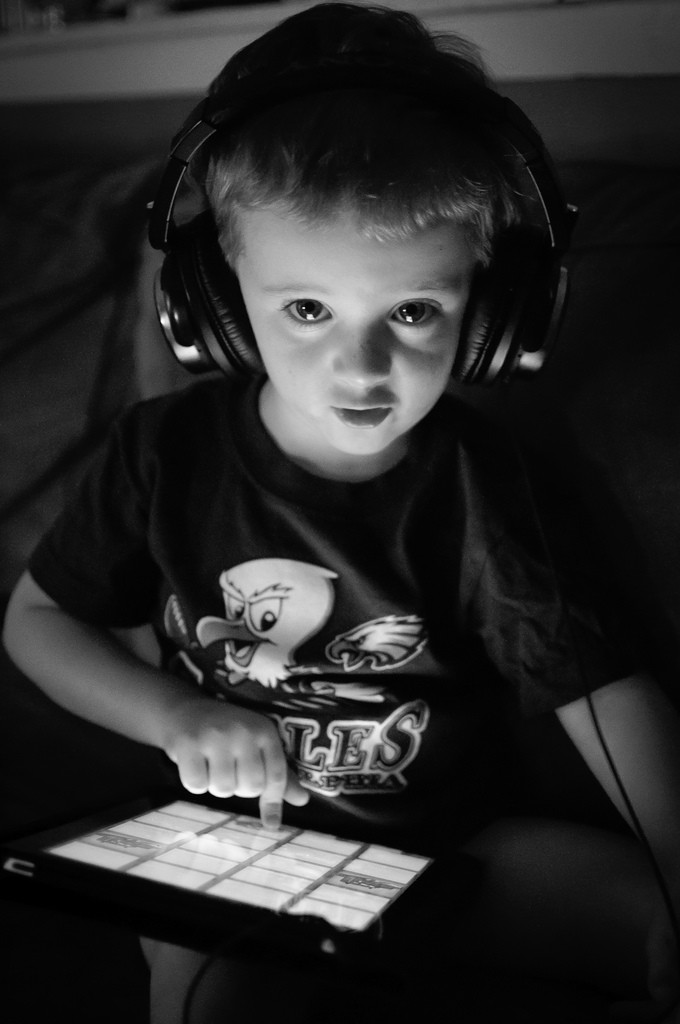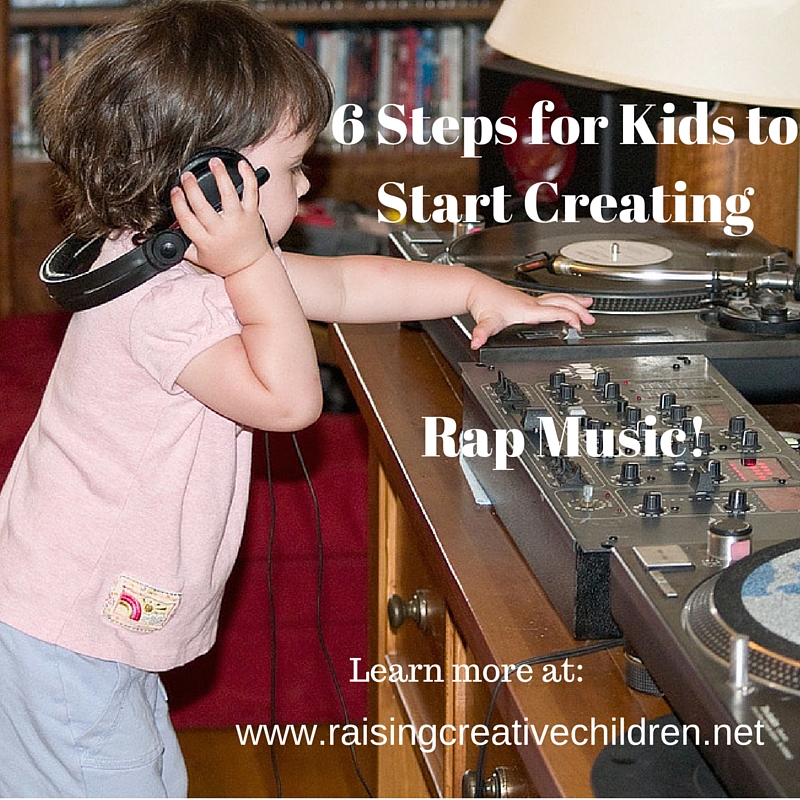[Updated May 2018] Back in 2015, The New York Times held a contest for young people (13-19) to rap the news. Well, at least to write a rap. We think this is a great opportunity to explore creating rap with music. Read on for resources that can help kids create rap music that is enjoyable (and appropriate) while learning a lot along the way!
Why have young people create their own raps?
Creating rap music like any other musical form has so much potential for young people to express themselves and make sense of the world. Trying to come up with lines that rhyme and getting syllables to line up with good sounding music is a great musical and language arts challenge. This type of engagement is perfect for children of all ages! It is a great opportunity to build grammar skills, vocabulary, confidence in performing, and to make creative musical decisions! It even provides opportunities to learn about poetry! In this case we are thinking about rap as an expressive art form for personal enjoyment rather than as a means to enter or be a part of the entertainment industry or to be a YouTube star.
For anyone who doesn’t think kids can rap, look around on YouTube for a bit and you’ll find some young people with impressive skills. Similarly, if you have never experienced positive and conscious rap or how rap can be used as a way to think through or process feelings and thoughts about life, take a look at this video by Baby Kaley (age 9 at time of the video):
This video about the everyday act of riding bikes (though with some obvious advertising embedded)
Or 5 year old Jordan who creates a beat and raps about his “problems”
https://youtu.be/ipb7ShGy9U4
You don’t need to be anywhere near as produced as some of what you find but it’s worth opening your ears and mind to see what kids can do!
1. Start with a beat.
You can either start with the lyrics or with a beat. We think it’s fun and musically satisfying to start with a beat. If you want to make the rap musical, it helps to have a beat to listen to over which the lyrics can be rapped. It also makes it feel much more “real” for young people to perform their own lyrics over a produced beat. This helps add interest to the flow of the written words and avoid cliche patterns that sound inauthentic.
2. Find a beat that you like
You can find or buy rap instrumentals that sound professional all over the internet. To make it easy, check out rap instrumentals/beats on iTunes such as (affiliate links throughout this post) :
- NY’s Finest Instrumentals by Pete Rock
- The Third Hand Instrumentals by RJd2 (very interesting but less traditional for mainstream hip hop)
- Motivational Hip Hop Beats & Happy Rap Instrumentals by Mixla Production Beats (synthesized beats that have a positive vibe)
- Dudley Perkins “Expressions” Instrumentals – by madlib (lots of funkiness here!)
- Hip Hop Instrumentals by Dope Boy (wide range of rap styles)
- Rock the Mic Vol 2. (might need to get over some of the titles but mimics mainstream Hip Hop Beats)
We love that instrumentals help with the feel of rap without worrying about any inappropriate language or content. The kids can make it into whatever they want!
 3. Create your own beat instead!
3. Create your own beat instead!
Kids can create a beats! So can the family! This is way more fun and actually quite easy to get at least a decent sound beat with some music apps and software. Of course there’s your banging on the table beats, pen or beatboxing if you are into live performance. However, we highly suggest using some technology to create beats.
For instance by using the apps iMaschine 2 or FLStudio Mobile HD on a mobile device allow kids to touch a couple of boxes and instantly create a beat that sounds pretty good. Playing around with the app will allow so many musical decisions!
See what’s possible once you get the hang of using an app like iMaschine 2:
4. Write the rap lyrics!
4. Once students or your child has a beat, they can start working on the lyrics. For the New York Times contest mentioned above, they would start researching and thinking about the news to find interesting or important topics to rap about. They can practice coming up with words and phrases that make sense and rhyme! Check out some of Flocabulary’s pointers on writing rhymes that address academic content. If you are starting with a beat, make sure to continually listen to the beat to see how well the words work with the music. This also helps with getting a good flow (the way the rapping sounds along with the beat). For a variety of kid appropriate rap lyrics, check out the book Hip Hop Speaks to Children: A Celebration of Poetry with a Beat – getting a sense of the lyrics and flow might inspire something new.
5. Perform the rap!
5. First, you need a name. MC something or other is one starting point. Though it’s fun to be creative here. Next, it’s time to rap (though whoever is creating the rap should be practicing the whole time she or he is creating the rap). But, now it’s time to practice flow. We highly suggest the book How to Rap: The Art and Science of the Hip Hop MC, which goes into great depth of strategies for creating and performing rap music. The book is based on interviews with successful MCs and could be helpful for people who want to pursue rap music creation more in-depth.
Of course you can also cheat a bit by just recording words into the super-fun AutoRap app by SMULE to have the app create a rap for you. We think both creating a rap yourself and having an app do it for you are fun. See what the kids think!
6. Be a DJ!
6. Want to get really fancy and get some turntable scratching to accompany the rap? Take turns with the kids alternating between who is the MC (the person rapping) and who is the (DJ). Yes, there are apps to make DJ’ing possible for anyone! And they are pretty user friendly too!
Check out (for mobile devices)
- Djay 2 (pretty easy to start using and integrates with Spotify!)
- Cross DJ (also pretty user friendly)
- Traktor DJ (a bit more of a learning curve but super powerful)
If you want to geek out a bit on the realm of digital DJ’ing check out the blogs Digital DJ Tips BBoy TechReport or DJ Tech Tools.
For kid appropriate books on DJ’ing, make sure to check out When the Beat Was Born: DJ Kool Herc and the Creation of Hip Hop (Kool Kerc is a Hip Hop icon) and
What can kids learn by creating rap music?
In addition to all of the vocabulary and subject content, creating an original rap gives young people opportunities to learn. . .
- Pulse (how the beat provides a steady pulse for the rap)
- Rhythm (the different combinations and patterns of sounds and how some sounds can be emphasized more than others)
- Melody (the different pitches/notes used along with the percussion sounds)
- Harmony (the combination of different pitches at the same time like chords)
- Form (the organization of the beat and how it might have sections that repeat, contrast, or vary)
- Timbre (the types of sounds to use for the beat)
- among other aspects of music
And this is all just scratching the surface!

